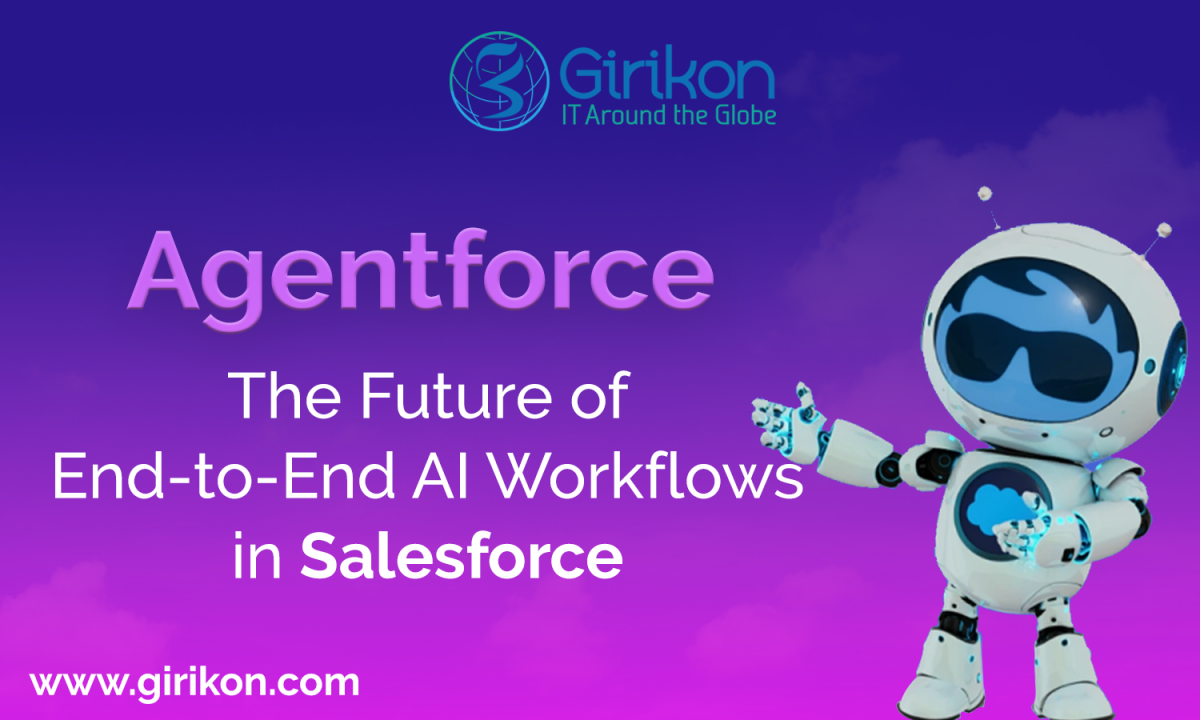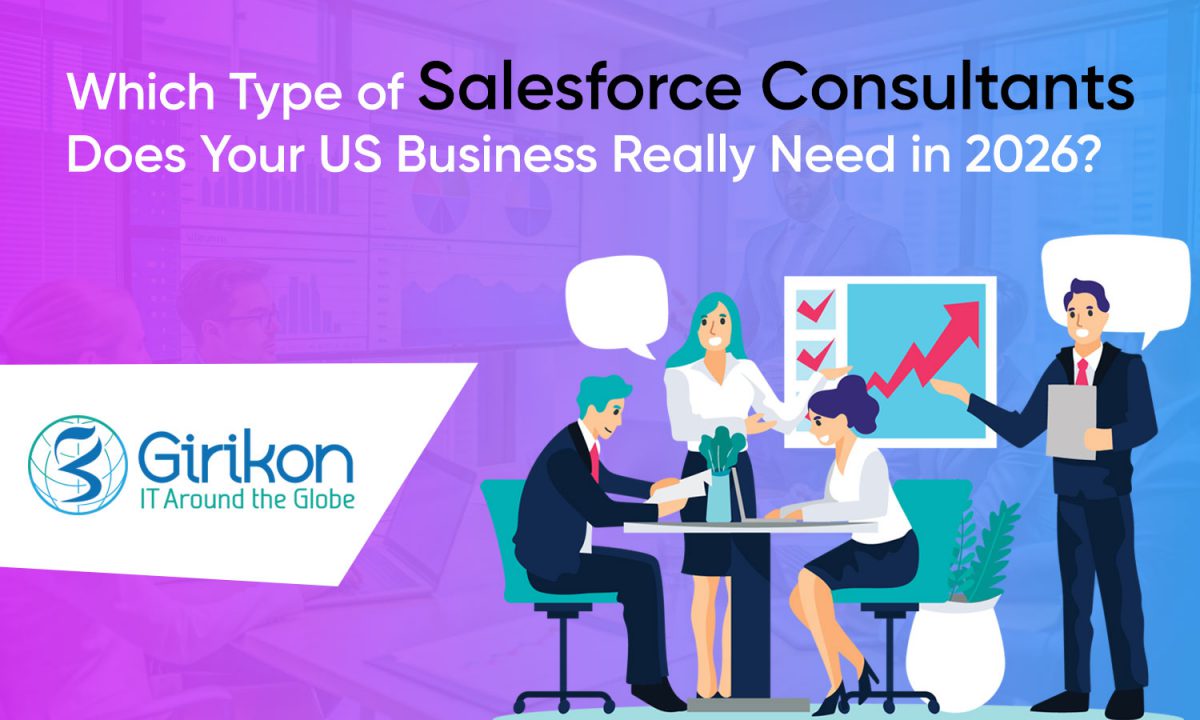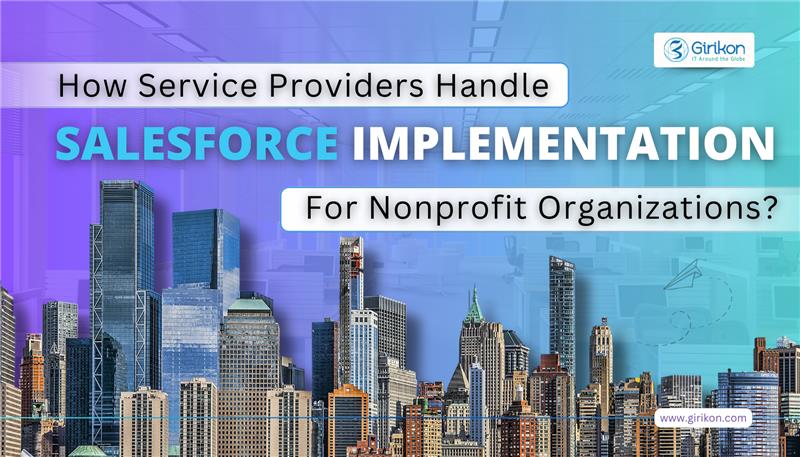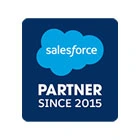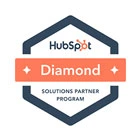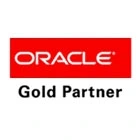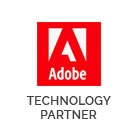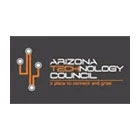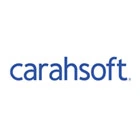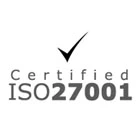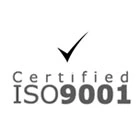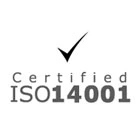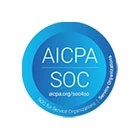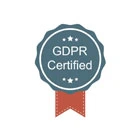table tr td{ padding: 10px;}
SMS open rates are at a staggering 98%. Email, on the other hand, stands at 20%. Your marketing, sales, and support teams cannot rely on legacy communication channels anymore. If you are now looking into SMS for Salesforce, you have come to the perfect place. This post cuts through the clutter and demonstrates how GirikSMS's native Salesforce app provides faster responses, tighter compliance, and AI-driven ROI, all without intermediary technologies or hidden costs.
Native App vs. External Connector – The Simple Version
What is a "native" application?
A software bundle that you install directly from AppExchange and runs entirely within Salesforce, with no additional logins required.
What is a Third-party connector?
A third-party package is one that resides outside of Salesforce and communicates with your organization via an API.
Why It Matters
Native App (GirikSMS)
Third-party Connector
Setup
Installation takes approximately 15 minutes.
Setup takes time -involves API keys, web-hooks, and point-to-point mapping.
Data Storage
All messages saved in Salesforce
Messages stored on third-party servers
Automation
Works seamlessly with Flow, Process Builder, and Apex
Need additional steps to invoke external endpoints
Compliance
GDPR/TCPA logs secure in Salesforce
Data is outside Salesforce, subject to legal audits
Ongoing Maintenance
Managed automatically by Salesforce updates
Manually handle tokens & version upgrades
In comparison, a native app is a plug-and-play solution that is faster and easier to deploy, automate, and manage compliance. Third-party connectors add moving parts, which take time and manpower to maintain. That is why businesses choose GirikSMS's native Salesforce messaging app.
GirikSMS Highlights for Salesforce SMS
Feature
Business Impact
Bulk & 1:1 SMS + WhatsApp from any record
98 % open, 5× more replies
AI Chatbot
Auto-qualify leads, handle FAQs, reduce human handling time by up to 40%
WhatsApp – SMS alternative
Don't miss a single notification
Flow, Apex & Triggers
Zero-code reminders and alerts
Real-time dashboards
View delivery, click-through, and campaign ROI within Salesforce
2025 Compliance (GDPR, HIPAA, TCPA, SOC 2)
Full transparency and audit trail
Transparent pricing, free SMS credits
No hidden carrier or other charges
Compliance (2025 Rules)
Standard
How GirikSMS Covers It
GDPR / Opt-in
Automated consent and “STOP” handling
HIPAA
PHI encryption and audit trail
TCPA
Quiet-hours handling and opt-out suppression
SOC 2
Data stored in Salesforce for external audits
Powerful Capabilities of GirikSMS
One-to-one conversations
Start texting with SMS or WhatsApp from any Salesforce record, including contacts, leads, opportunities, and custom objects.
Multiple chat views
Respond to contacts using the Chat manager. Manage all of your conversations in one place, pin custom labels, utilize templates, send multimedia files, schedule messages, enable auto replies, and do much more.
Bulk messages
Do you want to quickly send or schedule SMS and WhatsApp messages to a large number of people? Not a problem; using GirikSMS, you can do it via List Views, Reports, or Campaigns. Send personalized messages or utilize templates and bots.
Advanced Automation
Trigger built-in automation tools to send texts over SMS or WhatsApp.
Confirm appointments instantly, send reminders, special promotions, and more.
Send scheduled text messages based on time zones.
AI Chatbots
Automatically interact with prospects and customers.
Escalate to human agents for complex issues or based on rules.
Automate appointments, customer service tasks, lead nurturing and qualification, feedback surveys, and much more.
Benefits of GirikSMS
Built on Salesforce.
GirikSMS is a multi-channel AI messaging solution created and built specifically for Salesforce.
User-friendly software with excellent support
Our customers find GirikSMS to be extremely user-friendly. However, if you ever have a problem, our customer support staff is always available to help.
Quick and easy setup.
Software implementation does not have to be a lengthy and tedious procedure. GirikSMS gets you up and running in minutes. Furthermore, our customer onboarding team will fine-tune GirikSMS for your specific use cases and train your people on the app.
Affordable.
GirikSMS has simple and reasonable pricing. There are no hidden charges. There are no charges for unsuccessful messages. Pay solely for the messages delivered and the platform subscription.
Best-in-class compliance with GirikSMS
GirikSMS is the premier Salesforce-native SMS app for compliance, trusted by enterprises across the globe. Here’s why it is the ideal choice:
AI-powered Compliance Monitoring
GirikSMS's AI technology analyzes texts for SHAFT content, ensures opt-in compliance, and flags violations in real time. In short, it gives you peace of mind that manual checking cannot achieve.
Seamless 10DLC Registration
GirikSMS automates 10DLC registration. This means your numbers are approved by carriers within 24 hours. Unlike some platforms that require a week for approvals, GirikSMS ensures that there is minimal disruption in your campaigns.
Privacy-First Design
GirikSMS provides a non-server approach, with messages going directly to the network provider and being saved solely in Salesforce, ensuring compliance. Meanwhile, other rivals store data outside, prompting privacy worries among companies with stringent norms.
Transparent Pricing
GirikSMS starts at $3 per user per month, with no additional charges for compliance or automation. However, many other systems charge extra for crucial functionality like automation or message routing, making compliance expensive.
24/7 Support
GirikSMS provides free 24/7 assistance with quick response times (less than 4 minutes). Similarly, unlike other competitors who have reported delays or sluggish customer service, GirikSMS ensures you are never in the dark.
AI-Powered SMS and WhatsApp Drip Campaigns with GirikSMS
With inboxes full and attention spans that are diminishing by the day, forward-looking businesses are moving away from heavy email campaigns. The true connection occurs when people spend time on their phones. The future of communication is mobile-first over WhatsApp and SMS.
But vanilla messaging will not suffice. Today's users want quick, tailored, and intelligent communication. That's why businesses are increasingly turning to AI-powered, Salesforce-native message flows that go well beyond basic automation.
Why AI is the future of SMS drip campaigns
Traditional drip campaigns, particularly those based on email, frequently deal with low engagement and delayed responses. SMS open rates are a stunning 98% compared to 20% in the case of email.
However, Salesforce users often have to deal with:
Complex interfaces to navigate messaging tools and CRM.
Developer-intensive setups with low visibility (e.g., high costs for undelivered messages)
No backup plan in case WhatsApp fails.
No automation or AI logic incorporated into communication flows.
GirikSMS offers advanced functionality for:
Personalized drip campaigns.
AI-powered message flows
Multi-channel fallback (WhatsApp and SMS)
Leverage Salesforce flows and automation
You can:
Send out a text every time a form is submitted on your website or app.
Wait for 2-3 days for a response.
If there is none, send a WhatsApp follow-up.
If they click, alert your sales team and record it in the contact record.
All of this occurs within Salesforce. No switching tabs and no developer reliance.
AI-Powered Engagement: The GirikSMS AI Agent
GirikSMS's AI agent is its standout feature:
Learns response patterns over time.
Triggers outbound messages at the most opportune times.
Personalizes message tone and copy based on audience segmentation.
Dynamically adjusts the flow in response to user involvement.
This implies that your campaign gets smarter by the day, without the need for manual involvement.
GirikSMS's AI Messaging offers an unrivaled competitive edge.
Feature
GirikSMS Advantage
Native Salesforce Integration
No latency, 100% native, supports both custom and standard objects.
Unified Messaging Interface
Centralizes SMS, WhatsApp, and MMS.
Flow, Apex, Process Builder
Full automation with minimal or zero code
WhatsApp/SMS Fallback
Ensures delivery if any channel fails.
AI Chatbot & Smart Agent
Contextual responses
Analytics Dashboard
Delivery, open, clickthrough tracking
Global Compliance
GDPR, HIPAA, TCPA, SOC2-ready
Transparent Pricing
From $3/user/month, no fees on undelivered messages
Ready to get started?
Messaging from Salesforce should not be static. It needs to be intelligent, scalable, and secure. GirikSMS turns your outreach from a simple activity into a potent conversion engine.
Whether you work in healthcare, real estate, education, financial services, or nonprofits, you can now connect with your customers in a more meaningful way, regardless of where they are in the world.
AI messaging from Salesforce is the future of personalized engagement, especially when combined with GirikSMS' powerful capabilities.
Begin developing conversations, not campaigns. Request a demo today!
One of the most pressing challenges faced by businesses in this highly competitive digital era is upgrading their legacy system without losing crucial business data. This is where the need for a robust system arises. Salesforce – one of the most widely adopted platforms has become one of preferred choice of organizations across different industries for storing and managing their data besides modernizing business operations and customer engagement. However, transitioning from legacy system to Salesforce is a straightforward process especially when legacy systems are ingrained in a company’s operations. This is where organizations should consider getting in touch with one of the best Salesforce Consultants. With a combined expertise of strategic planning, technical acumen, and in-depth understanding of the IT ecosystem, these consultants play a vital role in integrating antiquated systems with Salesforce. Let’s take a look at how organizations manage this task:
What is the Need to Replace Legacy Systems?
Legacy systems are old and outdated platforms that play a vital role in supporting core operations of a business. These may include CRM or ERP solutions, as well as obsolete systems used for managing various functions such as HR, accounting and more. While these systems are reliable, they pose challenges due to the absence of advanced APIs, defined cloud compatibility, and outdated security frameworks. Integrating them with robust platforms like Salesforce is often risky, as any slip-up could disrupt essential business functions and impact overall stability.
Challenges Faced While Integrating Legacy Systems with Salesforce
Before exploring how consultants handle integration challenges, it’s crucial to recognize the key obstacles involved:
Data Silos: These systems store data in secluded databases with minimal adjustment. This absence of uniformity complicates the process of data extraction, transformation, and loading into Salesforce.
Limited APIs: Outdated systems aren't often designed for integration. Besides lacking modern APIs, they rely on outdated protocols, and offer little to no documentation. This makes connectivity and data exchange a significant challenge.
Performance Demands: Businesses require seamless operations and minimal disruption. Integrating outdated systems with Salesforce must be done without sacrificing performance or causing downtime. This ensures that routine activities continue without interruption. This makes low-impact integration approaches critical to meeting operational and service-level expectations.
Security Concerns: Old systems often rely on authentication, obsolete encryption, or data storage methods. Addressing these issues require integration with Salesforce to ensure secure transfer of data and maintain compliance with global regulations. To protect sensitive data, robust security measures are vital throughout the integration process.
Resistance: Users and IT teams are usually accustomed with legacy systems often resist shifting to Salesforce. They may be unsure to change set processes or adopting new tools, fearing trouble or increased complexity. Overcoming this defiance needs clear communication, training, and showcasing the advantages of modernization and enhanced workflows.
How Salesforce Consultants Use Legacy System?
Salesforce Consulting Partners use a phased approach to manage the integration of legacy systems.
Discovery and Evaluation: The process of integration begins with a discovery phase. In this stage, consultants work closely with IT, as well as business participants to get a clear understanding of existing business processes, system architecture, and more of the legacy systems. Through conduct workshops to review the current infrastructure, assess the data flow diagrams, and find all the systems involved in the integration. From determining the nature of integration needed to batch processing to whether it should be unidirectional or bi-directional, it includes everything. Additionally, consultants also evaluate the criticality of the data to be integrated besides taking note of any compliance requirements. This initial step ensures that each system, use case, and business requirement is thoroughly aligned before moving into the technical implementation phase.
Defining the Integration Strategy: After the evaluation is completed, consultants develop an integration strategy that is tailored and aligned with the needs and technical environment of an organization. This strategy defines the type of integration needed be it real-time, using middleware, or using ETL processes. It also defines the extent of integration, stipulating which modules, business processes and data sets will be associated with Salesforce and the legacy systems. Consultants regulate how often data should be coordinated, whether it’s based hourly or daily. The technology stack is also carefully chosen at this stage, which could involve native tools such as middleware solutions and more. This strategic planning ensures the integration is both efficient and aligned with business priorities.
Data Mapping and Transformation: With the integration tools in place, the next crucial step is detailed mapping of data and transformation. Consultants begin by mapping fields from the legacy system to equivalent objects and fields. They also identify inconsistent, outdated and duplicate data, cleansing it to ensure precision and reliability. Business rules are used to verify data and ensure quality standards through the process. Attention is given to altering key elements such as currencies, date formats and picklist values to align with the CRM’s structure. Consultants design fallback mechanisms to manage potential integration failures, ensuring the system is stable.
Testing the Integration: The integration between outdated systems and Salesforce is built and thoroughly tested. Consultants begin by developing APIs or configuring middleware connectors to allow seamless communication between systems. Authentication protocols are implemented to ensure secure access. Data pipelines are then created and tested within sandbox environments to identify potential issues early.
Training: Successfully integrating outdated systems with requires preparing the organization for change. Here, consultants play a key role by training employees on how to use Salesforce within the new environment. They develop a detailed process guides and clear documentation to help teams navigate the system assuredly. Key stakeholders are included in UAT to ensure the solution meets expectations. Apart from this, consultants provide ongoing support during and after the post-deployment phase. This helps teams smoothly adapt while ensuring minimal disruption to routine operations.
Maintenance: Once the integration is accomplished, ongoing maintenance is essential to ensure long-term success. Salesforce consultant’s set-up systems to ensure smooth running of integration. Real-time dashboards are employed to track the health and performance of the integration.
Final Words:
Integrating antiquated systems with Salesforce requires a right balance of technical acumen, strategic anticipation, and change management. Salesforce implementation partner brings together these capabilities, ensuring organizations not just modernizes their technology infrastructure, but also augment operational efficiency, as well as their overall customer experience.
Every business, irrespective of their business domain and size, must undergo digital transformation to ensure business success. One such technology that has transformed the way businesses function is Salesforce. Besides being a robust system for customer-oriented growth, Salesforce offers a range of capabilities across various business functions including Marketing, Automation, CRM and more. However, the actual potential of this platform can be realized through strategic planning, deep integration, detailed customization, and continual optimization. This is where an experienced Salesforce implementation partner steps in.
These experts act as solution architects, advisors and growth enablers. They help organizations bridge the gap between business goals and technology by tailoring Salesforce to meet unique goals of an organization. Let’s understand through this article why implementation partners are crucial to revealing digital growth and ensuring long-term success within the platform.
All You Need to Know About a Salesforce Implementation Partner
Such a partner is a certified individual or a company that assists businesses implement, tailor, and optimize this platform. Right from initial planning and configuration to data migration, integration, training, and regular support, they manage the entire deployment lifecycle. With extensive expertise in Salesforce and its products, these partners ensure faster, hassle-free rollouts aligned with business goals. So, whether you’re deploying it for the first time or augmenting an already existing setup, an experienced partner helps maximize ROI and drive digital growth.
Why to Associate with a Salesforce Implementation Partner?
Piloting the Complex Ecosystem: Salesforce along with its cloud solutions includes a vast ecosystem. The features associated with every product can be easily tailored to fulfill the unique needs of a business. However, organizations new to Salesforce might encounter challenge while navigating its complex ecosystem. A skilled partner can help businesses create a futuristic solution that can help drive growth.
Tailoring Salesforce to Business Objectives: One-size-fits-all solution isn’t effective any longer with every organization having their own strategic initiatives, processes and customer journeys. Salesforce implementation partners help organizations make the most of a platform’s potential, which can be unlocked only when the goals of an organization are aligned with the platform’s implementation. Besides undertaking comprehensive discovery approach to reveal goals, difficulties and opportunities, these partners take a deliberate approach to customization. The result is a CRM platform that effortlessly fits into the business functioning as a true extension of operations rather than a standalone tool.
Accelerated Time-to-Value: Extended CRM implementation can drain budgets and delay crucial augmentations in sales efficiency, service delivery and customer experience. Implementation partners play a significant role in quick deployment that too without sacrificing quality. Their industry expertise, utilization of industry best practices empowers them to simplify the implementation process. With their skill and acumen, they bring agility and outcome-focused approach to every project.
Driving Adoption: One of the biggest difficulties in Salesforce implementations is low user adoption. This usually stems from resistance to change or a system that fails to align with daily workflows. By making user enablement and change management key to their approach, an implementation partners addresses this issue directly. By designing intuitive interfaces, creating role-specific reports and dashboards, and delivering training sessions, they better the user experience over time. As a result, teams are not just comfortable using the platform but also inspired to input precise data to use the system for smart decision-making and customer engagement.
Connecting Salesforce Across the Digital Ecosystem: To draw the most out of Salesforce, it must be integrated to the expansive technology landscape such as e-commerce platforms, automation tools and more. However, connecting these different systems require technical expertise along with design understanding. Implementation experts are a pro in this area as they have expertise in using integration tools such as Mulesoft for API-driven integrations, middleware platforms for system synchrony and more. By breaking data siloes, these integrations provide a single view of customers.
Data Quality: Ensuring the quality of data is essential for digital business growth. Outdated, duplicate or improperly formatted data can lead to lost revenue, poor decisions and similar other implications. A CRM system stuffed with messy data makes it daunting for teams to trust the data, thereby affecting the authenticity of business decisions. Implementation partners play a vital role in addressing these challenges by setting up stringent data governance frameworks. They leverage data cleansing and deduplication tools, bring in to practice validation rules while implementing role-based access along with field-level security. They also ensure data monitoring and conduct regular audits to maintain accuracy and integrity.
Powering Innovation through AI: Salesforce offers powerful AI and automation features that can drive innovation across the business. However, several organizations fail to use these tools effectively simply because they don’t know how to utilize them effectively. This is where Salesforce partners add true value. These partners help businesses unlock the value of AI by automating redundant workflows, implementing predictive lead scoring, building smart bots for customer interactions, and using generative AI to speed up content creation. With these solutions in place, organizations can reduce manual work, and provide personalized experiences.
Maximizing ROI: Being a powerful platform, Salesforce is being adopted by organizations by making significant investments in add-ons, licenses and internal resources. Salesforce partners help organizations get the best return on their investment by setting clear goals and success measures from the start. They reduce service response times, and optimize marketing efforts through personalization. When implemented correctly, Salesforce not only keeps customers happy but also cuts down on business costs.
Final Words:
Digital growth goes beyond merely adopting new tools. Rather, it requires reconsidering how a business functions, associates with customers, and responds to change. While Salesforce offers the platform for digital transformation, it’s the implementation partner who brings that thought to life. Right from defining the strategy to driving adoption, and scalability, partners play a crucial role. For businesses aiming to attain digital maturity, associating with a reputed Salesforce consulting expert isn’t just helpful, it’s a strategic necessity for sustainable growth.
Almost a decade ago, understanding the exact requirement of your client, assessing the performance of your team, and the decisions that can lead to substantial business growth seemed to be a futuristic concept. However, in today’s era, every interaction and decision are driven by data. To get necessary edge, harnessing the power of data becomes necessary. Salesforce Einstein AI has emerged as a powerful tool that can be leveraged by organizations to make smarter, quicker and more strategic decisions across every department. Built natively within the Salesforce platform, this AI tool can help users assess data, predict outcomes, automate tasks and recommend next steps. This article explores why Salesforce Einstein AI has become a preferred solution for Salesforce Consulting organizations aiming to draw intelligent insights from data and turning those insights into decisive action.
All You Wish to Know About Salesforce Einstein
Salesforce Einstein – an all-inclusive suite of AI technologies is seamlessly integrated across the Salesforce Customer 360 platform. Leveraging advanced natural language processing (NLP), machine learning, predictive analytics, and deep learning, it delivers intelligent capabilities throughout the CRM. Its core purpose is to make AI easily accessible to all Salesforce users—regardless of their technical expertise.
Einstein provides several features designed to enhance various business functions, including:
Einstein Lead Scoring: Empowers sales teams to pay attention to the most qualified leads that are likely to convert by ranking them based on conversion potential.
Einstein Opportunity Insights: Evaluates engagement signals to predict the likelihood of deal success.
Einstein Case Classification: Augments customer service efficiency by directing support cases to the right channels.
Einstein Bots: These AI-enabled bots offer round-the-clock support to clients.
Einstein Copilot: An interactive AI assistant built into Salesforce apps that allows users to ask queries, draw insights, and take action using natural language.
How Einstein AI Works Behind the Scenes
While the internal functioning of exclusive Salesforce algorithms remains undisclosed, gaining a basic understanding of the data science techniques it usually employs can offer valuable insight. These methods shed light on how Einstein AI processes data and generates smart outputs. Listed below are some of these key concepts in simple terms to understand what might be occurring under the hood.
Linear Regression: Einstein AI leverages this method to anticipate future outcomes using historical data. For instance, it can predict metrics such as customer churn by searching trends in their past behavior. It also makes use of advanced models, which takes into account multiple variables. These analytics empower businesses to make smart and insightful decisions while maintaining the much-required edge in today's dynamic market.
Using Decision Tree for Making Informed Decisions: Einstein AI uses decision trees to break down complex decisions into clear, data-driven paths. These branching visual models show how specific inputs influence predictions or actions, making AI logic easy to follow. From lead scoring and case routing to next-best action suggestions, decision trees offer transparency and clarity. This helps Salesforce users build trust in AI outcomes, make informed adjustments, and take confident action—without leaving the Salesforce platform.
Unlocking Patterns: This AI tool employs clustering technique to group similar records based on common traits to reveal hidden patterns in data. This learning approach is perfect for finding customer segments, product predisposition etc., as it doesn’t depend on predefined labels. By systematizing data into clusters, Einstein helps users gain insights, enabling personalized interactions, targeted marketing, and smart strategies.
Responding to Languages: By leveraging NLP, Einstein allows users to interpret human language. By processing both speech and text, NLP powers intent recognition, sentiment analysis, and language translation. It also drives smart features such as automated replies, smart chatbots and predictive field suggestions across Salesforce applications. The outcome is more personalized and natural customer interactions. By integrating human interaction with machine intelligence, NLP augments efficacy, enhances service experiences, and enables faster decision-making throughout the platform.
Why Should Business Leverage Einstein AI
This AI tool empowers organizations to automate decision-making across various functions.
Lead Prioritization: Einstein AI evaluates past data, customer actions, and their engagement level to find which leads are most likely to convert to customers. It gives every lead a score, so sales teams know whom to prioritize first. This takes out the guesswork, saves time, and helps reps follow up more effectively using real insights. Consequently, teams can allocate their time and effort effectively thereby driving enhanced productivity and improved conversion rates. This finally helps attain a better sales performance. To implement this AI platform, you must associate with a reliable Salesforce Implementation Partner.
Predicting Churn: By examining patterns in product usage, transaction history, engagement levels and more, Einstein AI anticipates customer churn. By detecting early indicators such as unfavorable sentiment, it assigns a risk score to every customer. This allows service teams to take timely action. With valuable insights, businesses can avoid customer loss, optimize satisfaction, and fortify long-term relationships using data-backed strategies.
Suggesting Best Actions: Teams can understand what to do next by looking at live data, past activity, and customer behavior by harnessing the power of Einstein. By offering smart tips such as when to follow up, which product to suggest, or resolve an issue, this AI tool help various teams work faster and make better choices. With this helpful and personalized advice, teams can keep customers happy and ensure every step they take supports the company’s goals.
Final Words:
Einstein AI has become a strategic asset for businesses willing to make the most of data-driven insights. Integrated natively into the Salesforce platform, it amalgamates generative and predictive AI to help users at every level. Einstein AI is simple, secure, and fits well into any organization. Einstein requires no coding to set up and follows responsible AI standards. Whether you’re customizing customer experiences, spotting the most promising leads, or setting up automatic service replies, this AI platform helps you make smarter choices at every step. By understanding what customers need and guessing what they might do next, Einstein helps businesses get better results using clear, data-based insights. To harness the potential of this platform, make sure to hire Salesforce Consultants.
Looking to unlock the real power of Salesforce? Agentforce is where strategy meets execution, and transformation becomes unstoppable. From vision to velocity, it delivers end-to-end Salesforce solutions that are scalable, bold, and future-ready.
No matter if it’s about building intelligent automation, integrating enterprise systems, and launching multi-cloud experiences, it makes it all happen by becoming a growth engine for businesses.
However, taking Salesforce consulting services is required to make a bold strategy on how Agentforce ensures end-to-end Salesforce solutions.
What is Agentforce?
Agentforce is none other than the next iteration of Salesforce’s strategy that brings AI into the modern workflow. This phase uses generative intelligence to automate routing, personalize each and every interaction, and provide intelligent recommendations in real-time.
Agentforce helps businesses soar above traditional CRM systems and into the majestic realm where AI, data-driven decisions, and automation come together to build enhanced team productivity, wiser operations, and scalable growth.
Moreover, businesses can bring together AI-driven innovation, technical execution and consulting expertise under one roof with Agentforce to cover the entire cycle of Salesforce. No matter if you want to launch data-rich marketing campaigns, automate service operations, and streamline sales process, Agentforce has the ability to provide you all while ensuring to build a solution that is intelligent, scalable, and tailored to your business.
With the combination of hands-on implementation expertise, Salesforce consulting services, and generative AI capabilities, Agentforce empowers businesses to not just adopt Salesforce—but to own it as a competitive advantage.
Use Case: How Agentforce Transformed a Saas Company’s Salesforce Ecosystem
Here is the use case of Agentforce, unlocking its true potential in helping a mid-sized company streamline its sales and customer support processes via Salesforce solution.
The Challenge:
A client from the fast-growing SaaS company faces various issues like low adoption of Salesforce due to poor user experience, slow lead response time that impacts conversion rates, high agent workload caused from repetitive manual tasks, and disconnected tools across sales and support teams.
The Solution by Agentforce:
Now, let’s talk about how Agentforce resolves the challenge with these phases discussed below:
Phase 1: Salesforce Consulting & Strategy
Using Agentforce, Salesforce implementation partners initiate the engagement that includes AI-assisted discovery process—analyzing the client’s business objectives, user behavior patterns, and system gaps via intelligent insights.
Leveraging its in-built strategy accelerators, Agentforce helps consultants map pain points against business goals and generate a tailored roadmap that is not only scalable but also aligned with the company’s future vision. However, the roadmap is not static but adapted in real time with Agentforce continuously refining recommendations based on evolving business priorities.
Phase 2: AI-Driven Salesforce Implementation
Agentforce sales and service cloud builds an integrated system with the screen-pops feature that delivers full customer context in real time for quicker call handling. Moreover, it uses generative AI for first-level e-mails, and predictive AI for assigning priorities and leads.
Phase 3: Seamless CTI Integration
With the help of Agentforce’s advanced telephony integration like GirikCTI, agents can manage everything given below:
Access customer history in real time
Reduce average call handling time by 40%
Handle calls directly within Salesforce
Log call notes automatically.
After implementing Salesforce using Agentforce’s capabilities and everything that discussed within the phases, the SaaS company reported:
2x acceleration in Salesforce adoption
38% faster lead response time
Higher customer satisfaction scores within just 3 months
Fully connected sales and support ecosystem on one platform
60% of support cases resolution via AI-driven responses.
AI at the Core: How Agentforce Leverages Generative AI in Salesforce
As AI is embedded into the core of every Salesforce solution that Agentforce delivers, businesses are not just automating tasks, but they are transforming the way work gets done; customer interactions happen, and decisions are made. But how Salesforce generative AI services bring real and measurable value across departments. Let’s discuss this below.
Generate Personalized Emails in Seconds
Yes, Agentforce, using its capabilities, escapes the hassle of manually writing repetitive sales and support emails, thus enabling all team members to auto-generate emails tailored to each customer. Based on user behavior, past interactions, CRM data, etc., AI drafts personalized content in seconds which is ready to send, with zero typing needed.
Auto-Classify & Route Service Cases
No matter from which source the support cases come in—via chat, email, or phone, Agentforce with its generative AI capability quickly analyzes and categorizes all cases, also routing them to the most relevant agent or department. That means, no manual triage is required while assigning the issue to the appropriate resolution queue.
Summarize Call Notes & Interaction History
The time and energy consumed in typing detailed summaries after every call or customer interaction will remain saved and focused. All thanks to Agentforce that listens, learns, and generates a structured and clear summary for logging the same into Salesforce automatically. And guess what? It not only frees agents to move to the customer faster but also improves accuracy with just a few seconds required in post-call wrap up.
Predict Next-Best Actions for Team
Again, Agentforce uses the capabilities of predictive AI and suggests the most effective next steps based on opportunity stage, customer behavior, and case context. Whether it’s scheduling a follow-up, recommending content, or upselling, the system proactively guides the user, thus suggesting the best.
Automate Workflows Using Natural Language
No need to build complex workflows manually from now on as Agentforce, upon getting the instructions from the team can auto-generate a flow to send a welcome email. It even assigns the follow-up tasks too instantly using one and only generative AI.
In a Nutshell
Direct integration of Agentforce functionalities into the Salesforce ecosystem helps companies cut down manual work and improve accuracy, hyper-personalize customer experience, speed up customer interaction, and empower their employees.
However, having Agentforce is not enough, unless you have some experts leading you towards how to unlock its capabilities for your business growth and potential. So, what are you still waiting for? Now is the golden time to start connecting with those who will support you on your intelligent operations, scalable growth, and truly AI-powered Salesforce journey.
Connect with Girikon and move towards smarter workflows and sustainable growth.
table tr td {
padding: 10px;
}
When it’s about implementing Salesforce, size doesn’t always equal success. While large consulting firms boast global teams and glossy portfolios, many businesses—especially mid-sized firms, startups, and niche players—require something more agile and personal, that is aligned with their business goals.
Enter the boutique Salesforce implementation partner.
The focused and expert-led teams offer a refreshing alternative to the traditional big agency model—who do not just tick boxes but provide direct access to seasoned consultants, build tailored solutions, and move at the speed your business needs. That's not it, these partners help you launch fast, navigate complex challenges, and operate lean. So, what about the idea of joining hands with them?
Still confused about how they may bring advantages to the table? Just read the rest of the guide and resolve all your doubts within.
What is a Salesforce Implementation Partner?
Before we dive into what makes a boutique Salesforce implementation partner unique, it’s important to understand what a Salesforce implementation partner does in general.
Well, a Salesforce implementation partner is none other than a certified consulting expert firm that aids businesses in setting up, customizing, and successfully rolling out Salesforce solutions. These partners fulfill the gap of business’s specific needs with Salesforce’s powerful platform, thus ensuring that the platform is not just installed but fully optimized.
Dynamic Roles of a Salesforce Implementation Partner
Requirement Gathering & Solution Design: Upon assessing and understanding your business’s goals, these partners recommend the right Salesforce products and features to their clients.
Customization and Configuration: They offer this service too, thus tailoring the platform according to businesses’ unique workflows, processes, and data structure.
Data Migration & Integration: With the seamless movement of existing data and connecting Salesforce with other tools, Salesforce implementation partners ensure that businesses receive a unified place where every interaction is featured.
User Training & Support: By conducting essential training & support programs, consultants empower your entire team members to adopt Salesforce confidently and potentially.
Project Management: To manage the project, consultants ensure to oversee the timeline, rollout, and coordination across teams.
What is a Boutique Salesforce Implementation Partner?
A boutique Salesforce implementation partner follows a more specialized, focused, and hand-on approach while deploying and customizing Salesforce. These consultants are often referred to as expert-led and smaller consultancies who follow standardized methods and broad frameworks, instead of just delivering Salesforce.
For example, the consultants get to know your exact business model and align their working speed to yours; this process ensures that the project is managed with much more personal attention and that the product is fitted to your very challenges, needs, and nuances of the industry.
Key Roles of a Boutique Salesforce Implementation Partner
Tailored Discovery & Strategy: Before just recommending a solution, boutique partners invest their valuable time in truly understanding your business model, growth stage, and priorities.
Hands-On Configuration & Development: Instead of delegating any tasks to junior teams, experienced consultants and architects handle the setup on their own.
Rapid Iteration & Agile Execution: They work closely with you, thus providing essential frequent feedback loops and quick turnaround for faster time-to-value.
Consultants Direct Contact: With direct contact between you and the experts who do and manage the work, you will have the highest clarity and alignment ever.
Deep Industry/Niche Expertise: Due to their industry-specific training in such fields as financial services, Saas, and healthcare, to name a few, they employ contextual know-how, unlike generalists.
Ongoing Advisory & Partnership: Also, boutique Salesforce implementation partners continue as your trusted advisors even after going live for enhancements, optimization, and long-range support.
The Boutique Advantage: Why Smaller Might Be Smarter
Choosing a boutique Salesforce implementation partner isn’t about going small but about going smart. Here are why businesses find more value, flexibility, and real results in boutique consultancies.
Custom Fit Over One-Size-Fits-All
Instead of using any cookie-cutter templates, boutique partners understand your unique business processes, growth stage, and goals. Therein, they build a Salesforce solution tailored specifically for business needs. This results in building a platform that fits like a glove and adapts to rigid configurations.
Work with the Experts
Interacting only with account leads—well, that’s not the case here in boutique consultancy. Direct interaction with project managers, architects, developers, consultants, etc., lets you ensure fast problem-solving and well-informed decisions.
Agility That Moves with Your Business
As your business grows, boutique partners pivot quickly. Meaning, they adjust features, priorities, and workflows on the fly no matter if there is a mid-project shift in direction and sudden change in scope. This enables the team to move with you—not after you.
Specialization That Runs Deep
As most boutique firms already focus on Salesforce clouds, they’ve seen your challenges before and already know what works. So, no matter if you seek services in nonprofit donor management, fintech compliance, and Saas customer onboarding—consultants speak your language like they own it.
Better Value Without the Bureaucracy
Not just barebones but boutiques mean smart investment. Businesses receive higher level expertise without the layers of approvals, inflated costs of large teams, and enterprise overhead. And guess what? This helps them invest their every dollar into successful execution, not in administration.
Stronger Collaboration and Long-Term Trust
Instead of making you feel like another account number, boutique firms help you build relationships that last. With a genuine stake in your success and more personalized service, they turn out to be those long-term strategic partners who understand your business inside and out.
When Should You Choose a Boutique Salesforce Implementation Partner?
Well, here are all scenarios where you may need this boutique consultancy while implementing Salesforce.
If you need fast time-to-value
If your project requires deep niche expertise
If you value direct access to experts
If you’re a startup or mid-sized business
If you’re in a niche industry
If your budget is lean but your expectations are high
If you want direct consultant access
If you need quick iterations and rapid delivery
If you value depth over breadth
Traditional Salesforce Implementation vs. Boutique Salesforce Implementation: A Comparative Analysis
Before wrapping up, let’s unveil the main difference between these two approaches for Salesforce implementation.
Aspects
Traditional Salesforce Implementation
Boutique Salesforce Implementation
Project Management
Managed by project managers who are often not directly involved in the technical side
Led by consultants who have hands-on expertise and are deeply involved
Customization
Limited to standard templates and modules
Builds custom solution that are aligned with specific workflows
Approach
Standardized or one-size fits all approach
Highly tailored and can be customized to your business needs
Specialization
Has broad knowledge across many industries
Deep knowledge and expertise in specific industries
Value for Budget
Involves higher costs with additional bureaucracy and overhead
Cost effective and deliver more value per dollar spent.
Team Structure
Large teams with layered hierarchies
Lean and focused teams with direct access to experts
Speed to Value
Longer timelines due to internal coordination and scope
Faster delivery with fewer hand-offs and tighter execution
Agility
Slow to adapt due to rigid processes
Flexible to enable quick iterations and pivots
Client Interaction
Limited face time with senior consultants
Direct and one-on-one collaboration with solution architects and senior consultants
Ideal For
Large enterprises with generic requirements
Midsize companies, small ones, and those that have special needs.
Final Thoughts—Choosing Smart, Not Just Big!
Salesforce success is not just about having the platform—it's about who helps you bring it to life. And sometimes, the best move isn’t going big, but going focused, smart, and boutique.
So, what about having boutique Salesforce consultants? Looking for a firm that helps you thrive on innovation? Join hands with Girikon, helping you with smarter implementations, deeper industry expertise, and faster results.
No matter if you are a startup or mid-sized business, trying to navigate complex niche requirements, Girikon has the commitment, agility, and ability as a boutique partner that’s always in sync with your goals.
So, let’s trust the process and build something impactful, future-ready, and tailored like never before.
Salesforce may be a powerful and trending solution—but unlocking its full potential requires more than just turning it on. That’s where the Salesforce consulting company appears and acts as strategic advisors, hands-on problem solvers, and system architects who ensure that Salesforce is designed, implemented, and optimized in a way that drives real business value. Read through the guide to learn what their core duties include.
Core Duties of a Salesforce Consultant
1.Discovery & Requirement Gathering
Prior to embarking on any actions towards Salesforce implementation, it is necessary to first identify the core need of the business. Hence, without a thorough discovery phase, a Salesforce implementation may lack direction. This phase calls for a Salesforce consultant to work closely with end users, department heads, and managers. In that way, the consultants learn how this particular organization works, what challenges it faces, and how successful implementation helps it resolve those problems. Below is what this step encompasses:
Workshops and Interviews
Consultants meet with different teams like marketing, service, IT, and sales to gather input. This meeting helps them learn about manual processes, current challenges, and wish list features directly from the people who are going to use Salesforce.
Mapping Current Workflows and Pain Points
In this step, consultants analyze everything about how things happen in a business, how leads are tracked, and how customer service cases are handled. They identify gaps, inefficiencies, or other bottlenecks that Salesforce can fix.
Defining Success Criteria for the Implementation
Instead of getting Salesforce up and running, the step defines how success looks like, i.e., faster lead conversions, improved customer support response time, and better visibility into sales pipelines.
2.Solution Design
Now that the discovery and requirement gathering is complete, it’s time to turn the insights collected from the first step into a real and workable plan. And how would Salesforce consultants do it? Well, they put your business needs in one place. This helps them create a tailored blueprint for how Salesforce will be configured to intersect those goals.
Here is what the phase includes:
Designing System Architecture
The consultants draw the big-picture structure of the Salesforce system including modules like Experience Cloud, Service Cloud, and Sales Cloud. This structure defines the data flow, modules alignment, and third-party tools' connection to ensure security, scalability, and efficiency.
Recommending the Right Salesforce Products, Editions, and Integrations
Instead of moving with an approach of “one-size-fits-all," the consultants build the customized solution by letting you choose the exact products like Field Service Lightning, Pardot, CPQ. Moreover, they add editions like Professional vs. Enterprise that not just matches your business goals but also comes under the budget. Besides, consultants advise on integrations—how external systems should be connected.
Crafting a Future-Ready Data Model with Optimized Workflow Integration
At this moment, consultants define the way data must be organized (fields, custom objects, and relationships), and business processes must be automated (lead routing, case escalation, and approval processes). This ensures that Salesforce supports your future growth and current needs without turning out to be a messy and outdated system.
3.Configuration & Customization
Having finalized the design, now it’s time to bring the solution to reality. That’s where Salesforce consultants configure and customize the platform based on your unique business goals so that it perfectly aligns with the objectives.
Set Up Custom Fields, Objects, Page Layouts, and Record Types
Custom Fields: Beyond what Salesforce provides, this allows you to capture the data you need. For example, you may require a “Service Tier” field on a Case and a “Vendor Type” field on an Account.
Custom Objects: If your business tracks data that doesn’t fit into Salesforce’s standard objects like Opportunities, Accounts, and Leads, a consultant can create entirely new ones—Projects, Subscriptions, and Assets.
Record Types: It is useful only when managing different processes for the same kind of data—like handling renewal sales and new sales separately—without mixing things up.
Page Layouts: This controls what users view and interact with, making sure users see only fields and features relevant to them.
Deploy automation features by configuring flows, approval routes, and process builders
Flows: These are dynamic and visual automation tools, useful when you need to process case resolution, quote approval, and onboarding.
Approval Rules: Based on predefined logic, it automates the approval of certain records like large discount approvals and high value opportunities, thus keeping decision-making consistent.
Process Builders: Used for automating certain tasks like triggering notifications, sending emails, and updating fields.
Customize Dashboards, User Interfaces, and Reports
Dashboards: Bring in summaries of different business metrics. For example, a support team might get to learn about open cases by priority, meanwhile, a sales manager sees pipeline by stage.
User Interface (UI) Customization: This includes optimization of page layouts, navigation, and buttons for usability and clarity—so users work seamlessly with Salesforce.
Reports: Dynamic reports allow users to dive deep into bottlenecks, trends and performance, thus helping them improve further and match user needs with KPIs.
4.Integration with Other Systems
Salesforce is no doubt dynamic software—however, it works even more effectively and smarter when it aligns well with the tools your business uses. That is why integration is crucial, connecting Salesforce to your other technology systems and saving team members from wasting time manually copying data and bouncing between platforms.
Integrate marketing, customer service, ERP, or custom app together like
Marketo, Mailchimp, or HubSpot for marketing
Custom In-house applications built exclusively for your organization
Robust ERP solutions to optimize inventory, financial management, and business operations.
Customer support platforms like ServiceNow and Zendesk
Use APIs, Middleware, or AppExchange Tools for Seamless Data Flow
APIs serve as the channels through which two systems come in real-time sync with one another.
Middleware Tools like Dell Boomi, Zapier, and MuleSoft conduct intricate integration and chain multiple apps in one workflow.
App Exchange Solutions provide pre-built connectors for apps, enabling their customization based on businesses’ unique needs.
5.Data Migration & Management
Transferring a lot of data from an older system is what is required when a company makes a switch from other systems to Salesforce. But here is the catch. Moving data isn’t as simple as just copying and pasting—because it requires planning, precision, and care. This ultimately results in turning data all clean, secured, and organized.
Cleanse, Map, and Transform Data
Cleanse: Eliminate duplicates, fill in missing information, and resolve incorrect values to prevent data from clogging the system.
Map: Align old data fields with new Salesforce fields, making your old “Client Name” field mapped to Salesforce’s “Account Name.”
Transform: Turn one format into another to fit Salesforce's structure.
Consider Data Accuracy, Structure, and Security
Accuracy: Your records should bring current and updated business information.
Security: Sensitive data is treated accordingly and is put under access permissions so that only the right people with authorized permission have access to it.
Use Tools like Third-Party Solutions and Data Loader
Third party tools like Jitterbit and MuleSoft provide advanced features for complex and ongoing migrations.
Data loader, a Salesforce provided tool helps in bulk uploading, updating, or deleting data for large data sets.
6.User Training & Change Management
Salesforce implementation can be technically perfect, but its adoption will fail if users don’t understand how to use it. That’s where training and change management appears and ensures that the team understands how to use the system confidently. Here is how the consultants make training and change management happen.
Create and Deliver Training Materials and Sessions via Concerning These Factors
Training Format Types: Create records of video tutorials, live workshops, cheat sheets, FAQs, and interactive walkthroughs.
Audience-Specific: Tailors the content for various groups like service agents, admins, and sales reps so that what is relevant to a specific user is delivered.
Real-Life Scenarios: Train on actual business use cases to make learning more relatable and practical.
Design Onboarding Plans for Different User Roles
As consultants are already aware that onboarding is role-based and streamlined, they ensure that different teams learn and understand different things. For instance:
Sales teams focus on pipeline tracking, quote generation, and lead management.
Executives require guidance on reports, key metrics, and dashboards.
Customer support teams are trained in segments like case escalations, SLA, and case handling.
Guide Users on Best Practices and Usage Policies
Flexibility within Salesforce is good—but it can lead to inconsistency if not guided well. That’s where consultants come and set guardrails by:
Creating documentation that teams can refer to when questions come up.
Establishing policies like updating frequency, requiring fields, and naming conventions.
Sharing best practices for task tracking, opportunity updates, and data entry.
7.Post-Implementation Support & Optimization
In the course of the Salesforce platform going live, the best Salesforce consulting company makes sure that it performs well, delivers value, and evolves over time. Here is how they do to ensure this:
Monitor System Performance: Consultants ensure that the system is functioning well in terms of user activity and accuracy. This way they track reports, integrations, and automation to flag any technical issues that need to be resolved attentively.
Offer Ongoing Support and Enhancements: They resolve bugs, ensure feature enhancements based on new requests, and consider user support when new hires need onboarding.
Refine Workflows and Features as Business Needs Evolve: Workflows require adjustments with your company stepping towards growth or launching new products and services. That’s why the best Salesforce consulting company revisits the setup periodically to fine tune your processes.
To Sum it Up!
Together, these Salesforce implementation partners help ensure that Salesforce remains a living and growing part of your business, not just a static system that gets dusty after launch. Not just these consultants provide the foresight and support that ensure successful implementation but also act upon their post-launch responsibilities.
If you want to measure the true return on investment collected with Salesforce’s potential, consider meeting with our experts at the panel. They align Salesforce capabilities with your future business strategy, thus ensuring that the engine of innovation and agility will bring lasting growth and a competitive edge in your industry.

 +1-480-241-8198
+1-480-241-8198 +44-7428758945
+44-7428758945 +61-1300-332-888
+61-1300-332-888 +91 9811400594
+91 9811400594
